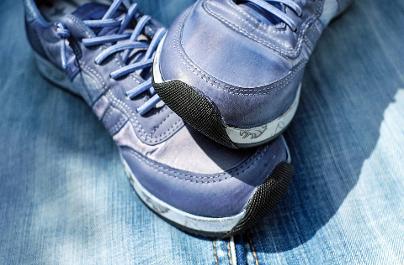Sport Injuries:
RUNNING INJURIES: why is it important to rest and patiently rehabilitate, with a soft- tissue lower limb- related injury?
The Concept of paying the PRICE
Let’s start by saying that by “soft tissue” we mean NO BONE ISSUE involved. Most of the running- related lower limb soft tissue injuries nowadays come from training errors, and once there is a running- related lower limb injury it is usually very hard for devoted runners to keep still for more than a few days (I repeat: we are referring to those injuries that do not require hospital attention and, again, don’t involve bones).
As mentioned in our other article ‘How and why choose running shoes based on THE CONCEPT OF COMFORT AND PREFERRED MOVEMENT PATH’, there are steps which are fundamental for running- related lower limb injury prevention:
- A gradual start (have you ever heard of the app Couch to 5k? It does not mean Couch to 5k in three days. And lovely app, by the way, for those about to start their running adventure).
- Warming up BEFORE exercising.
- Cooling down and stretching AFTER exercising.
But what should be done if we do have injured ourselves? A PRICE needs to be paid.
PRICE stands for Protect, Rest, Ice, Compress and Elevate: five simple steps that sometimes seem hard to pursue.
Just think that once a runner is injured, the chances of the injury coming back are sensibly higher than for someone else. The reason why it is hard to rest, especially if that injury is not that sore, is because after a month or two that we endorse a physical activity, our body start releasing a feel-good hormone every time we exercise.
This is the question you need to ask yourself: do you ever want to have that amazing buzz again?
What is more appealing to you: stopping now for a while and rehabilitate patiently, or having to stop potentially indefinitely, if your injury becomes a lot worse? Said this, if you stop for a while and rehabilitate it does not mean stop every kind of activity. With a sport-related foot injury the whole point is to relief pressure and keep the joint involved still in order to heal, so you can still talk to your podiatrist or physiotherapist about other training exercises you may be able to do.
Benefits or PRICE:
PROTECT: Protecting means off-loading and movement prevention (length of off-loading time to be agreed with a specialist).
REST: We find it almost good news the fact that recent research reports the efficacy of gradual loading of the injured limb NOT TOO LONG after the injury (better news than the old principle of resting till the injury was completely healed), as this may be more effective than resting for too long. As written in a well-researched article by Bleakley at al. (2012): “Progressive mechanical loading is more likely to restore the strength and morphological characteristics of collagenous tissue” especially in ankle strain, and again: make sure you are followed by a podiatrist or a physiotherapist for this as Bleakley adds: “Injuries vary so there is no single one size fits all strategy or dosage”. With regards to other injuries such as plantar fasciitis or Achille’s tendonitis, for example, there are stretches that can be done, to speed up the healing process. Yet again, under the supervision of a podiatrist or physiotherapist.
ICE: ice packing will bring the temperature down around the inflamed area, giving an analgesic relief.
COMPRESS: we think that this step is not the one size fits all, as the research is not too extensive on the subject, at least in relation to sport-related soft tissue lower limb injuries, and not all individuals benefit from it.
ELEVATE: elevation will help reduce any swelling that may be present.
Article written by one of our Podiatrist, Giorgia, on the LinkdIn platform: Podiatry Concepts.
